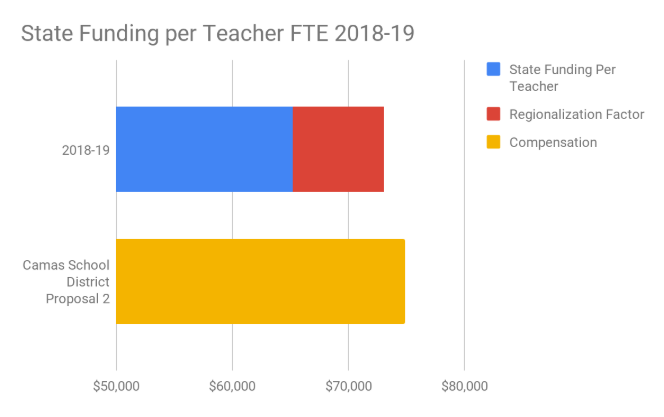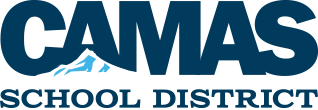We will be updating this page as events unfold and new questions emerge.
WALKOUT ISSUES
Why are you closing schools during the strike? Can’t we have substitute teachers teaching students? Currently, we have around 150 substitutes, which doesn’t come close to the number of teachers we would need. Additionally, many also substitute in other districts.
If our schools don’t start on September 4, will we have to make up the missed day(s)? State law requires 180 days of instruction, and the state will grant no exceptions to that law because of a strike. Makeup days would first follow our inclement weather makeup days. However, final decisions about when strike-lost school days will be made up will be determined when the strike is complete. Possible make-up days can include Saturdays, winter break, spring break, non-student work days and/or days added at the end of the year. School cannot legally be held on Sundays or holidays.
Why are athletics allowed to continue while schools are closed? Coaches have a separate contract that would not be impacted by a CEA walkout.
What about childcare and preschool? All preschools and childcare and Community Education classes are tied to the school-year calendar and will be closed until school resumes.
I’m not in CEA, am I supposed to go to work? Employees who follow the school day calendar (9 and 10 month staff) will not report to work until the school year officially begins. Year round staff will work their normal schedule.
SALARIES
How much are Camas teachers earning? When did they last receive a raise? Camas teachers have received raises on a regular basis. Over the last three years, teachers have seen increases between 16% and 19%. The McCleary decision puts benchmarks on starting, average, and top teacher salaries. Average teacher salary is calculated by multiplying the staff mix, a calculation determined by the state that accounts for the experience of your staff, by the starting teacher value.
| Total Comp (base + TRI) | Starting Teacher | Average Teacher | Top Teacher |
| 2014/15 | $38,640 | $60,077 | $71,875 |
| 2015/16 | $39,979 | $63,137 | $75,353 |
| % Change | 3.5% | 5.1% | 4.8% |
| 2016/17 | $41,769 | $66,647 | $78,727 |
| % Change | 4.5% | 5.6% | 4.5% |
| 2017/18 | $44,811 | $71,525 | $84,462 |
| % Change | 7.3% | 7.3% | 7.3% |
| 3 yr % Change | 16.0% | 19.1% | 17.5% |
Why did the CSD post a link to salary information for all Camas employees via a media outlet? This information has been published for years by multiple news agencies. When one group talks about salaries, people often wonder about the salaries for other groups–administration in particular, and we received questions about various staff positions. At our board meeting on 8/13/18, a request was made to remove the link. We have removed the link and have posted the salary schedule for 2017-18 with TRI included instead.
The salary information is inaccurate. It doesn’t reflect my W-2, what I pay out of pocket for health insurance or how much I’m spending on my student loans. The salary information the media posts is mined from OSPI budget documents and represents only budgeted information. Salary reflects the state’s salary schedule and Other Salary includes base salary, TRI, three additional days, professional development, stipends, and extra-curricular pay. Mandatory benefits include what the district covers for state retirement, FICA, Medicare, unemployment, and workers’ compensation. Extra work assignments are the only compensation not shown in the budget.
W-2 information rarely matches contract information as school district contracts and budgets operate on a school year calendar and the IRS Jan. – Dec. calendar. So our 2017 W-2 statements represented 8 months of any 2016-17 contract and four months of any 2017-18 contract.
It is absolutely true that our individual out-of-pocket expenses for health insurance, retirement or even student loans are not reflected in our budgets.
FUNDING
How are teachers funded from the state? This is one of the big changes in the new funding model. In the previous system, the state would fund the number of teachers they allocated based on student population. If a district chose to increase the amount of staff beyond the state allocation, they did so through other funding sources such as local levy. Camas has chosen to fund beyond that allocation. The amount of money received used to be based on the experience of the teaching staff. If a district had a larger portion of experienced teachers they would receive more funding through a factor called staff mix. Camas has a veteran teaching staff so we benefited from the previous system. In the new model, the state provides the average teacher salary amount for the state plus any regionalization factor for each district. Staff mix was eliminated. Districts with more veteran teaching staffs receive less proportional funding then they previously did in this model. If compensation is greater than state funding per FTE than additional revenue will be needed in the future to avoid cuts.

How is the district spending the increased funding from the state? We are spending all of the allocated funding for staffing on staffing. For details on the 2018-19 budget, read this summary.
Is there a cap? There has been much debate about this topic. We established this budget based on language from ESSB 6362 Sec 209. RCW 41.59.800 which put a cap on salary increases using the consumer price index if the average teacher salary was already at or above the state average teacher salary. This section has been interpreted differently by different stakeholders.
How are other districts giving larger raises? As of August 9, we are aware of 24 of 295 districts in the state that have settled contracts with teachers. Most of these districts have one or more of the following characteristics:
- Have less experienced, shorter-serving teachers who make less money than the average allocation from the state
- Are not losing Local Effort Assistance (additional money from the state if they are located in an area with lower property values)
- Currently, do not have local levies that are higher than $1.50 per $1,000 of assessed property values
Is our district using the increase in state funding to add administrators? No. While there are several new faces among all of our employee groups, we’ve only added one administrator; this was a planned increase necessitated by the opening of the new Discovery High School and comes with an allocation from the state.
Is our district using the increase in state funding to add to fund balance? No. In fact, proposals would require us to use fund balance in order to maintain staffing levels. To be clear, the McCleary “fix” has put our district in the potential position of cutting future programming, including jobs, in the next 2-3 years. This is primarily due to the full effect of our local levy being cut by 50% beginning in 2019/2020. Also, the state will reduce our funding for regionalization by 1% annually starting in 2020/2021.
What are the major issues of disagreement between the teachers’ union and the district? Salary. CEA is in the second year of a three-year contract, however, the agreement has a compensation opener every year. At this time, the negotiating teams have not agreed on any salary-related items.
What is TRI? According to the CEA collective bargaining agreement, TRI (Time, Responsibility and Incentive) is compensation for additional responsibilities provided by certificated staff. These TRI responsibilities will go beyond those levels possible within the basic education programs as funded by the state legislature. Examples include:
- Parent conferencing and communicating with parents
- Collaborative planning meetings/activities
- Curriculum development and classroom design
- Preparation prior to the opening of the school year
- Closeout at the end of the school year
- End of term assessment/grading and preparation for the new term
- Assisting/tutoring students
- Work associated with year-end evaluations










